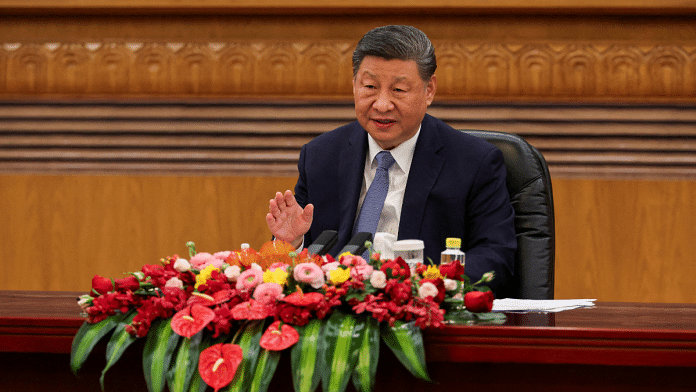China is indeed the upper riparian for several major rivers that flow into India, notably the Indus, Sutlej, and Brahmaputra. However, it’s impossible for Beijing to “turn off the tap”. Most of the water in these river systems doesn’t originate from the Tibetan Plateau (which China controls) but comes from precipitation and tributaries within . India is not wholly dependent on Chinese-origin flows, especially in the case of the Brahmaputra and Sutlej, where downstream contributions are substantial.
Moreover, there is no literal “tap” for China to turn off. It has already been maximising upstream water usage for years—unilaterally and without accountability. China has built extensive hydropower infrastructure across its river systems, often without informing or consulting downstream neighbours. There is no binding treaty between China and any lower riparian country—including India—to govern river-sharing or ensure predictable flows. In contrast, India and Pakistan have the IWT, one of the few functioning water-sharing treaties in the world.
Take, for instance, the Indus River. China has constructed a dam near Demchok, in a region where the river crosses from Tibet into Ladakh. This is outside any treaty framework and certainly outside any formal water-sharing agreement. Ironically, the Indus has been allocated almost entirely to Pakistan under the IWT—yet here is China building a dam on it, without any transparency or consultative process.
Even more revealing is the fact that if China were to restrict the flow of the Indus and Brahmaputra, the countries that would suffer the most are Pakistan and Bangladesh. China’s threat is not just hollow—it is potentially self-defeating. Making good on the threat would hurt its strategic partners in the region far more than it would harm India.
China’s track record on regional water cooperation does not inspire confidence. On the one hand, it invokes international law and equitable sharing in the context of the IWT. On the other, it refuses to join the Mekong River Commission. China has dammed the Mekong extensively, severely reducing water flows to Vietnam, Laos, Cambodia, and Thailand. This has led to reduced sediment loads, declining fish stocks, and increased vulnerability to droughts.
The same pattern holds with the Brahmaputra. China has not consistently shared hydrological data on the river, despite earlier agreements to do so during flood seasons. Meanwhile, it is constructing a massive dam on the Yarlung Tsangpo, the upper stream of the Brahmaputra, which would be among the largest in the world. This project predates India’s decision to hold the IWT in abeyance and has continued despite concerns raised by New Delhi and environmentalists around the globe.
China’s lack of transparency and disregard for downstream consequences reflects a broader approach: development first, accountability later. It prioritises hydropower generation and water security for itself, often at the expense of ecological balance and the rights of neighbouring countries.
In fact, the impact of China’s actions on the Tibetan Plateau is already being felt. Observers have increasingly erratic flows in rivers like the Sutlej and Indus over the past few years—likely a consequence of upstream Chinese infrastructure and water diversion. The notion that China is now “threatening” India over water flows misses the point: it has already been reducing flows and consolidating control for years.
A deeper analysis reveals the real motive behind this sabre-rattling. China is not warning India over a future hypothetical action—it is using the possibility of India reviewing the IWT as justification for what it has already been doing. This is not about enforcing a rules-based water order; it is about cloaking unilateralism in the garb of strategic retaliation.
India must read the situation for what it is: geopolitical signalling, not a genuine threat of leverage. China’s actions fit a broader pattern of asserting upstream control while denying the same right to others. In that sense, its current posturing is less about water and more about reinforcing alliances and projecting regional dominance.
The IWT has held for decades, despite wars and hostilities. Any move India makes on the treaty should be based on its own interest, sustainability, and regional stability—not on pre-emptive threats made by a hypocritical neighbour.
The author is an adjunct scholar at the Takshashila Institution. He tweets @YusufDFI. Views are personal.
(Edited by Prasanna Bachchhav)








